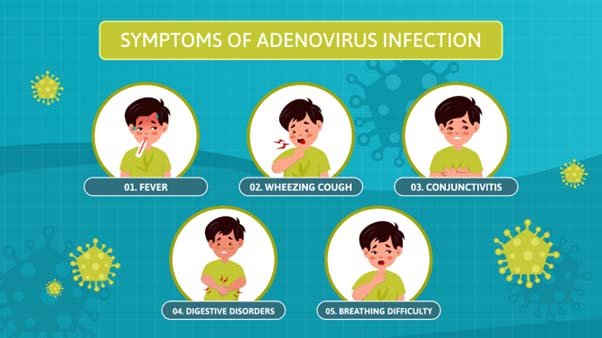Adenovirus Infection
Why in news :
- On Saturday, the West Bengal government set up an eight-member task force to ‘supervise the works related with control of adenovirus and treatment of affected persons’.
- The State government’s statement said that so far 10,999 acute respiratory infection cases in children have come to the fore.
- It is a recombinant strain of human adenovirus type 3 (HAdV3) and type 7 (HAdV7) that is causing the majority of infections.
What is the adenovirus infection?
- The Centre for Disease Control and Prevention of the United States government states that adenoviruses are common viruses that typically cause mild cold or flulike illness and are usually spread from an infected person to others by close personal contact.
Adenoviruses are usually spread from an infected person to others through :
- Close personal contact, such as touching or shaking hands
- The air by coughing and sneezing
- Touching an object or surface with adenoviruses on it, then touching your mouth, nose, or eyes before washing your hands
- Some adenoviruses can spread through an infected person’s stool, for example, during diaper changing.
- Adenovirus can also spread through the water, such as swimming pools, but this is less common.
- While the virus can affect people of any age group, children with low and compromised immunity are at a higher risk.
Symptoms :
- Adenoviruses can cause mild to severe illness, though serious illness is less common.
- People with weakened immune systems, or existing respiratory or cardiac disease, are at higher risk of developing severe illness from an adenovirus infection.

Adenoviruses can cause a wide range of illnesses such as :
- common cold or flu-like symptoms
- fever
- sore throat
- acute bronchitis (inflammation of the airways of the lungs, sometimes called a “chest cold”)
- pneumonia (infection of the lungs)
- pink eye (conjunctivitis)
- acute gastroenteritis (inflammation of the stomach or intestines causing diarrehea, vomiting, nausea and stomach pain)
Syllabus : Prelims + Mains; GS3- Diseases in news

